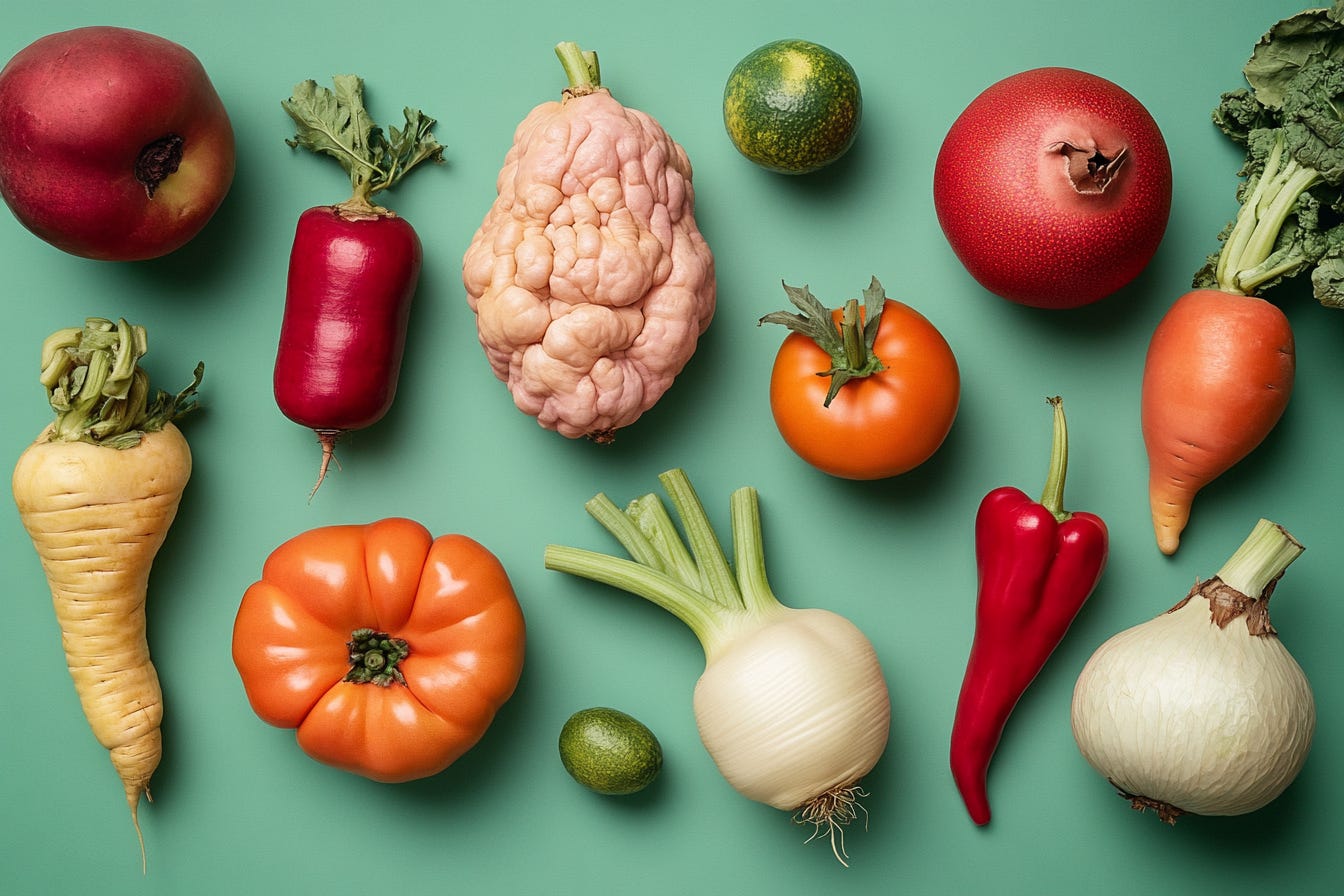Perfection is Dead: Why Imperfect Ideas Are the Creator Economy’s Secret Weapon
The billion-dollar hustle proving that messy is better than meticulous.
A few years ago, a box of “ugly” produce landed on my doorstep. The apples were lopsided, the carrots looked like they’d been through a bad breakup, and the tomatoes had scars that told a story. This wasn’t a grocery delivery gone wrong—it was my first order from Imperfect Foods, a company that’s built a thriving business by selling the fruits (and vegetables) of imperfection.
Imperfect Foods took what others saw as waste and turned it into a movement. By embracing produce that didn’t make the beauty cut, they tapped into a cultural shift: the growing appreciation for authenticity and resourcefulness. Turns out, people love imperfection—and not just in their groceries. Across industries, from handmade pottery to quirky side hustles, “good enough” is becoming the gold standard.
The Rise of the "Good Enough" Economy
The creator economy is booming. A 2023 report by SignalFire estimated that 50 million people worldwide now identify as creators, contributing to a $100 billion industry. But here’s the twist: many of the most successful creators aren’t polished perfectionists. They’re scrappy experimenters who turn their quirks into cash.
Here’s why there’s never been a better time to launch your own imperfect venture:
Cultural fatigue with perfection: Social media used to worship airbrushed aesthetics and curated feeds. But after years of filters and fake vibes, authenticity is back in style. People crave relatability over unattainable gloss.
Low-cost tools: Platforms like Canva, Figma, and TikTok have democratized creativity. You don’t need a studio budget to produce content; you just need an idea and a smartphone.
AI assistance: Tools like ChatGPT, MidJourney, and Descript are closing the gap between amateur and pro, making it easier than ever to turn a rough sketch into a viral hit.
Why Imperfection Works
At first glance, it seems counterintuitive. Why would anyone pay for a candle that looks like it melted in transit or subscribe to a podcast where the host forgets to edit out the ums and ahs?
Imperfection sells because:
Relatability Rules
Perfect is intimidating. Imperfect is approachable. Buying a lopsided cupcake feels like supporting a friend, not a faceless corporation.
“And now that you don’t have to be perfect, you can be good.”
~John Steinbeck
FOMO for Flaws
Imperfection is inherently unique. You’re not buying one of a million identical widgets; you’re buying something with character. Limited runs and one-off quirks create scarcity, which fuels demand.Action Trumps Overthinking
Creators who embrace imperfection get to market faster. Instead of wasting months perfecting a prototype, they release a minimum viable product, iterate based on feedback, and stay ahead of competitors still stuck in planning mode.Take Sara Blakely, the founder of Spanx. Her billion-dollar brand started with a pair of scissors, a few pairs of pantyhose, and zero industry experience. Her mantra? “Don’t wait for perfection. Just start.”
Imperfect Hits: Case Studies
Crocs: Love them or hate them, Crocs leaned into their awkwardness. The “ugly shoe” that no one took seriously is now a $2 billion-a-year business, thanks to quirky collabs and unapologetic marketing.
Bob Ross: Bob Ross didn’t just teach painting—he taught the world to embrace imperfection. His “happy little accidents” mantra turned mistakes into opportunities, making creativity feel accessible to everyone. What began as a public access show is now a cultural icon, inspiring millions to create without fear of flaws.
Etsy Sellers: Whether it’s misshapen pottery or handstitched T-shirt tags, the charm of handmade flaws has turned Etsy into a $13 billion platform.
The Psychology Behind It
Psychologists call this the “Pratfall Effect.” People are more likely to trust and like someone (or something) that makes a small mistake. It’s why we root for the underdog and why we’ll happily buy a product that proudly embraces its quirks.
But imperfection isn’t an excuse for sloppiness. The key is to be deliberately imperfect. Consumers want effort, not laziness. Your cucumber candle doesn’t need to look edible, but it does need to smell amazing.
How to Embrace Imperfection (Without Failing)
Start Ugly
Launch your idea in its rawest form. No one expects your first YouTube video to look like Spielberg or your first novel to read like Hemingway. They just want to see you try.Iterate Loudly
Use feedback as fuel. Release, refine, and repeat. The beauty of imperfection is that it leaves room to grow—and loyal audiences love being part of the journey.Tell Your Story
People don’t buy products; they buy narratives. Share your scrappy process, your early failures, and your wins. The messier, the better. We’re wired to root for the underdog.
The Imperfect Lesson of It All
Remember that box of lopsided apples and scarred tomatoes? Imperfect Foods didn’t just sell me produce—they sold me a perspective shift. By turning “ugly” fruits and veggies into a billion-dollar business, they proved that perfection is overrated.
The same lesson applies to anyone with a half-baked idea or a dream still taking shape. Whether it’s starting a side hustle, launching a product, or rethinking your career, imperfection isn’t just acceptable—it’s an asset.
So, embrace the crooked carrots in your life. Package them, market them, and share their story. Because in today’s world, it’s better to be messy and in motion than stuck in pursuit of flawlessness.








